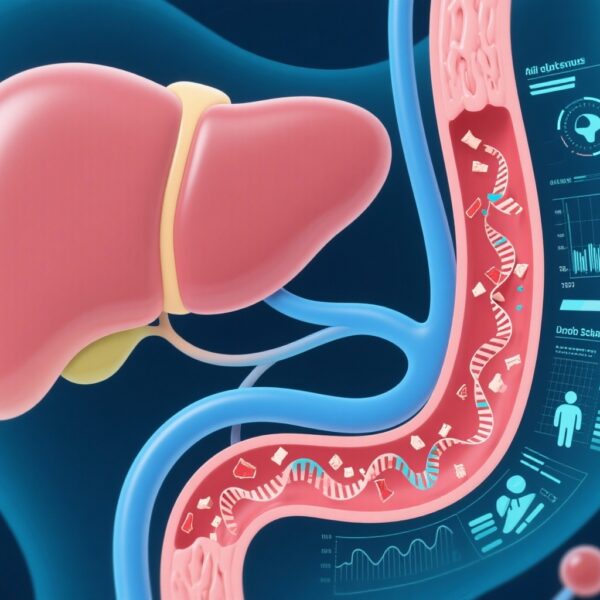Highlight
– Sequential administration of bepirovirsen followed by pegylated interferon-α-2a (Peg-IFN) may reduce relapse rates in chronic hepatitis B (CHB) compared to bepirovirsen monotherapy.
– Response rates were higher among patients with lower baseline hepatitis B surface antigen (HBsAg) levels (≤3000 IU/ml).
– The combination therapy was well tolerated with comparable adverse event rates across treatment arms.
– This represents the first evidence supporting a strategy of antisense oligonucleotide-mediated viral antigen suppression followed by immunomodulation to sustain viral control.
Study Background and Disease Burden
Chronic hepatitis B virus (HBV) infection remains a global health challenge, affecting over 250 million people worldwide and leading to liver cirrhosis, hepatocellular carcinoma, and significant morbidity and mortality. Current standard-of-care includes nucleos(t)ide analogue (NA) therapy, which effectively suppresses viral replication but rarely achieves sustained off-treatment viral control or loss of hepatitis B surface antigen (HBsAg), considered a functional cure. Consequently, lifelong therapy is typically required.
Bepirovirsen is an antisense oligonucleotide (ASO) that targets HBV RNA transcripts resulting in reduced HBsAg and HBV DNA levels. Prior studies (e.g., B-Clear) demonstrated that bepirovirsen can induce profound viral suppression in a subset of patients, but post-treatment viral relapse remains an issue. Pegylated interferon-α-2a (Peg-IFN), an immunomodulatory agent, has complementary antiviral effects and can enhance host immune response against HBV.
The B-Together phase IIb trial evaluated the sequential use of bepirovirsen followed by Peg-IFN to assess if this strategy can deepen viral suppression and reduce relapse rates after stopping therapy, potentially representing a treatment advance toward finite therapies and functional cure in CHB.
Study Design
This multicentre, open-label, phase IIb randomized trial included 108 adult participants with chronic HBV infection stabilized on nucleos(t)ide analogue therapy. Participants were randomized 1:1 into two arms:
- Arm 1: Bepirovirsen 300 mg once weekly (including loading doses on Days 4 and 11) for 24 weeks;
- Arm 2: Bepirovirsen 300 mg once weekly (including loading doses on Days 4 and 11) for 12 weeks.
Following bepirovirsen, all participants received pegylated interferon-α-2a (Peg-IFN) 180 µg once weekly for up to 24 weeks. Throughout, patients continued stable NA therapy. Post-treatment follow-up extended up to 36 weeks.
The primary endpoint was the proportion of participants achieving combined serum HBsAg <0.05 IU/ml and HBV DNA below the lower limit of quantification (LLOQ) for 24 weeks after completion of Peg-IFN therapy, without the initiation of new antiviral treatments (indicating sustained response off therapy).
Key Findings
The intent-to-treat population comprised 55 patients in Arm 1 and 53 in Arm 2.
- Primary Outcome: Achieved by 5 participants (9%) in Arm 1 and 8 participants (15%) in Arm 2.
- Baseline HBsAg Levels: All responders had baseline HBsAg ≤3,000 IU/ml, consistent with previous data suggesting lower baseline antigen levels predict better therapeutic response.
- Comparative Analysis: Indirect comparison with data from the B-Clear phase IIb study (which assessed bepirovirsen monotherapy) indicated that sequential Peg-IFN administration reduces relapse rates occurring after bepirovirsen alone.
- Safety and Tolerability: The proportion of adverse events (AEs) and treatment-related adverse events were similar across the two treatment arms and consistent during both bepirovirsen and Peg-IFN phases. Most adverse events were mild to moderate in severity, and no new safety signals were identified.

These findings suggest that sequential administration of bepirovirsen followed by Peg-IFN can extend the duration and robustness of viral suppression beyond what is typically achieved with ASO monotherapy.
Expert Commentary
The B-Together study presents promising evidence for a novel, sequential therapeutic approach combining ASO-mediated viral RNA silencing with immunomodulation using Peg-IFN. The rationale synergizes suppression of viral antigens, which may restore immune recognition, with direct immune activation.
Notably, the higher sustained response rates were seen in patients with lower HBsAg levels, consistent with the understanding that reduced antigenemia is favorable for immune reconstitution in CHB. This aligns with current literature emphasizing the interplay of viral antigen burden and host immunity in determining treatment outcomes.
However, the modest absolute response rates highlight that while sequential therapy may reduce relapse, achieving functional cure broadly remains elusive. The open-label design and absence of a Peg-IFN monotherapy control arm limit definitive efficacy conclusions. Long-term follow-up beyond 36 weeks would be informative to assess durability. Moreover, predictive biomarkers for responsiveness and optimal patient selection require further study.
This investigation opens avenues to refine combination and sequencing strategies for HBV cure, including adjunctive therapies targeting cccDNA or novel immune modulators.
Conclusion
The B-Together trial establishes that sequential therapy with bepirovirsen followed by pegylated interferon is a tolerable and effective strategy in patients with chronic hepatitis B on stable nucleos(t)ide analogue therapy, particularly in those with lower baseline HBsAg levels. This approach demonstrates a potential method to enhance and maintain viral suppression post-treatment, reducing relapse rates compared to bepirovirsen alone.
These findings provide a foundation for further clinical development of combination regimens incorporating antisense oligonucleotides and immunomodulators, moving closer to finite and functional cure therapies for chronic HBV infection. Future larger and controlled studies with longer-term follow-up will be critical to confirm efficacy, clarify safety, and guide patient selection.
References
Buti M, Heo J, Tanaka Y, et al. Sequential Peg-IFN after bepirovirsen may reduce post-treatment relapse in chronic hepatitis B. J Hepatol. 2025 Feb;82(2):222-234. doi:10.1016/j.jhep.2024.08.010 IF: 33.0 Q1 .
Lok AS, McMahon BJ. Chronic hepatitis B: update 2020. Hepatology. 2020;72(2):667-688.
Yuen MF, Seto WK, Chow DH, et al. Antisense oligonucleotide bepirovirsen treatment for chronic hepatitis B infection: safety and efficacy results from the B-Clear study. Hepatology. 2024;79(1):97-110.





